

| The pelagic larval stages of most benthic or demersal species generally are presumed to be passively dispersed in the water column prior to their acquiring competence to metamorphose. For communities characterised by species with long-lived larvae the likelihood is, therefore, that local adult reproduction (output) and larval colonisation (input) will be de-coupled and the populations demographically open. Nonetheless, at large spatial scales (e.g. 10 km2) there may yet be significant stock recruitment relationships in local populations. For that reason measuring larval supply as a propagule input in addition to the relative importance of pre- and post-settlement processes would help the understanding of current theory on population regulation/limitation and community dynamics in marine benthic systems. | |||
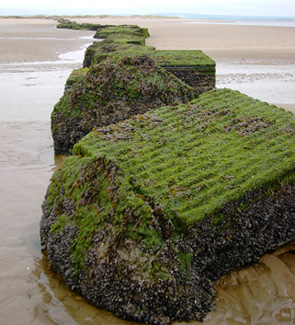

Tentsmuir Point National Nature Reserve is located at the mouse of Firth of Tay. In St Andrews Bay the current flows northward along the coast. The beaches from Fife Ness to St Andrews is rocky, and then, becomes sandy all the way through Tentsmuir Nature Reserve. Consequently, the barnacle larvae which moult to cyprids around or after St Andrews have difficulties to find appropriate substrata to settle, leading to the high cyprid density around Tentsmuir.
The trap is a cylinder with a conical baffle (see the picture and figure right for the design). It is overall dimentions 29 cm height and internal diameter 2.8 cm, resulting in an aspect ratio of 10.4. The inclusion of baffles (1) stabilise the volume of the dead space, and (2) minimise advection of larvae out of the trap by wave washout whilst not hindering advection of larvae into the trap. To further minimise avection out of the trap, a dense killing solution (urea) is filled. Because the traps are specifically intended for intertidal deployment, and would be accessible to the public, it is expedient to avoid formaldehyde.
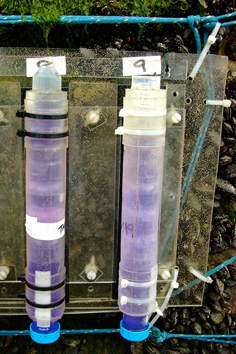
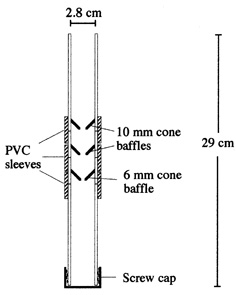
For the assessment of aperture sizes and conical baffles, 3 types of baffles with different aperture sizes were prepared: 0.5 cm2, 1 cm2 and 5 cm2 (not conical, simply flat as seen in the picture above). These traps are cable-tied to a clear acrylic mounting plate which itself is cable tied against the barnacle-covered substratum (see the left picture). In the study area the rock face was emersed on every tide. Larval capture efficiency was assessed by emptying traps either on a daily basis (two tides) for several days.
The trap performance was also assessed by sand catch (placing traps in sandy beach and mearsure the volume of sand captured in the trap).
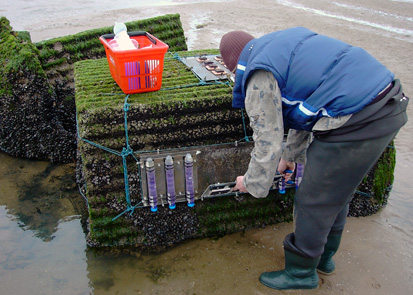
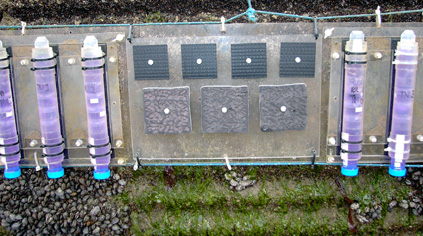
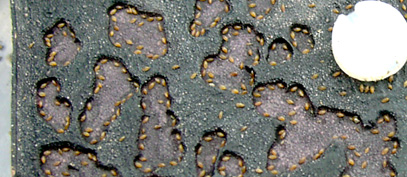
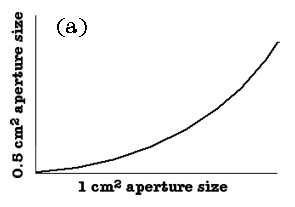
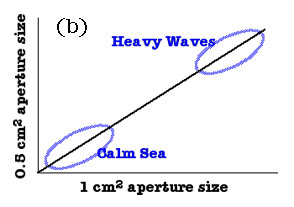
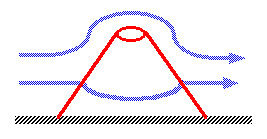
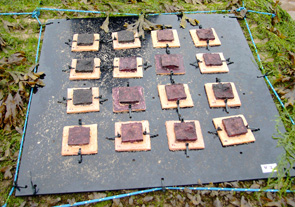
As seen in the graphs above and below, the trap with 0.5 cm2 aperture size showed the best performance in the three traps tested. If the 0.5 cm2 aperture trap also had a linear correlation with the other two traps in catching cyprids as observed in sand capture, it wouldn't be matter whichever trap was used for measuring larval supply. However, it was a power correlation, therefore, the trap with the smallest aperture size was considered best for the purpose at high larval densities.
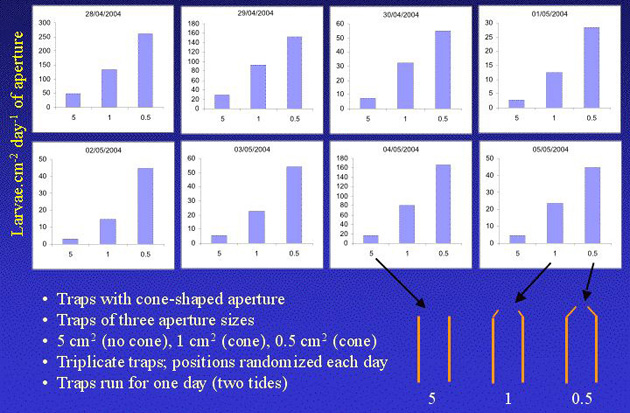
1. Less urea is lost - killing or capture probability is high.
2. Small opening means that only small fragments of algae can enter, i.e. no blockage.
3. Less debris, dead algae, sand or shell fragments, i.e. it is easier to sort samples.
4. Numbers of larvae are lower, i.e. less time to count.
5. Will catch larvae more efficiently in heavy waves.